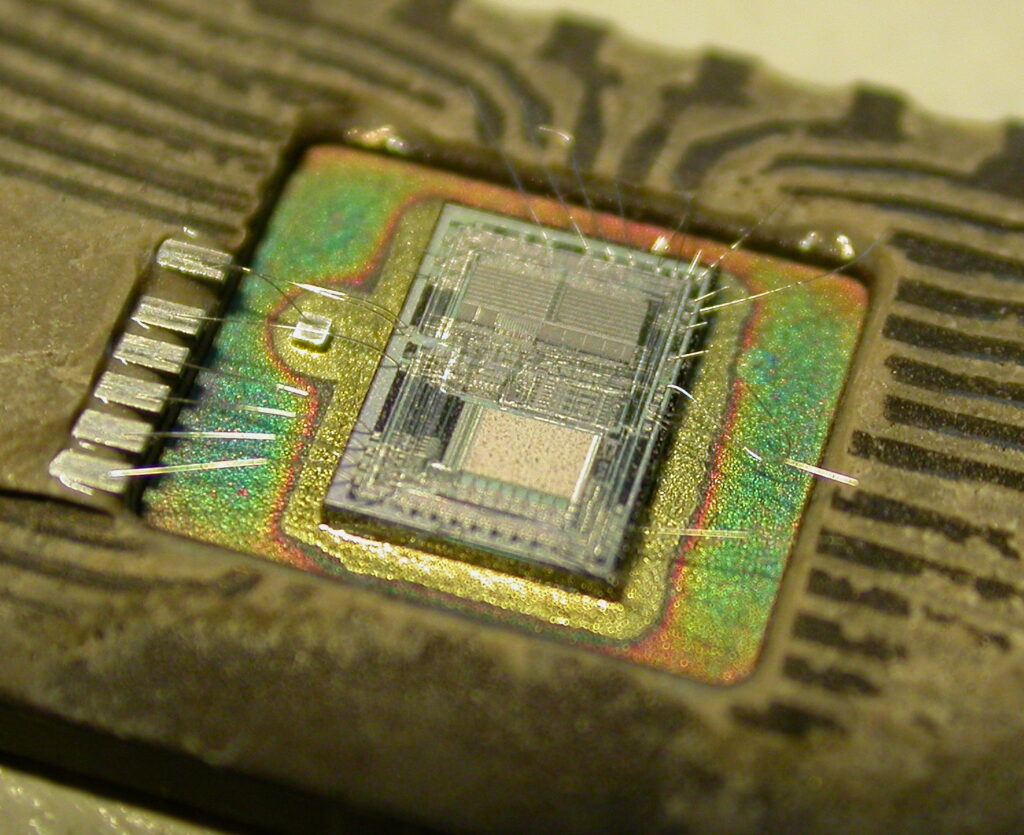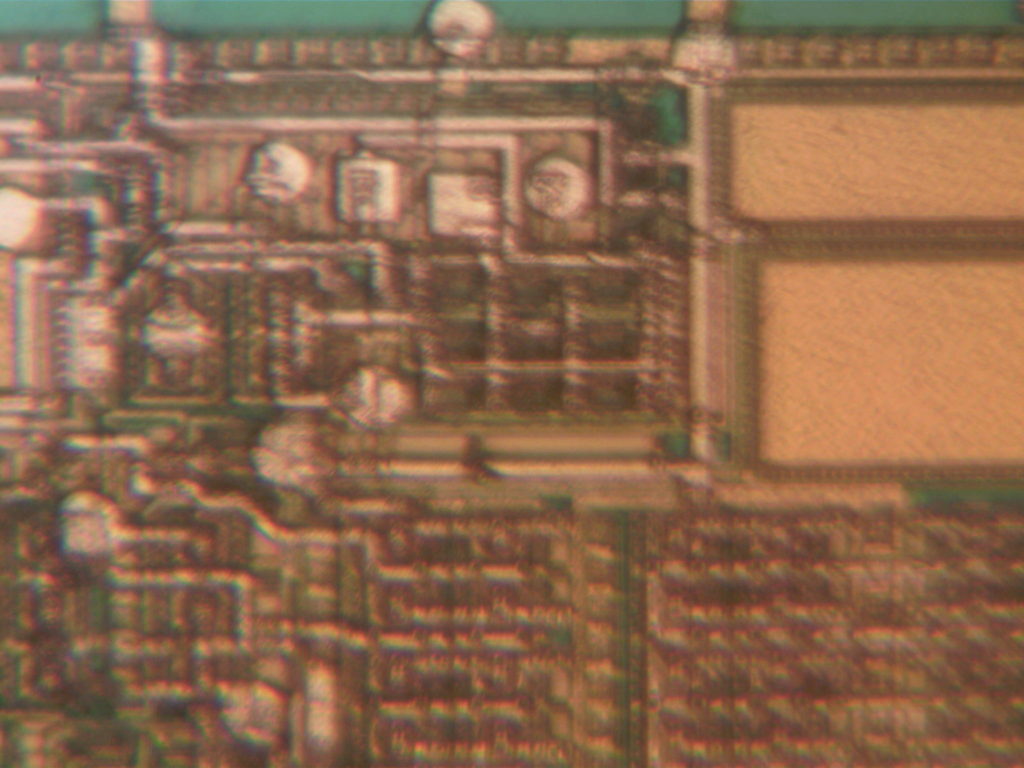Posts Tagged ‘reverse chip content’
 Reverse Chip ATmega162PV Heximal
Reverse Chip ATmega162PV Heximal
Reverse Chip ATmega162PV Heximal is a process to crack microcontroller atmega162pv security fuse bit and then readout the program from mcu atmega162pv flash memory and eeprom memory;

The Parity Generator calculates the parity bit for the serial frame data. When parity bit is enabled (UPMn1 = 1), the transmitter control logic inserts the parity bit between the last data bit and the first stop bit of the frame that is sent.
The disabling of the Transmitter (setting the TXEN to zero) will not become effective until ongoing and pending transmissions are completed, i.e., when the Transmit Shift Register and Transmit Buffer Register do not contain data to be transmitted if Recover microprocessor atmega1280pa flash memory.
When disabled, the Transmitter will no longer override the TxDn pin. The USART Receiver is enabled by writing the Receive Enable (RXENn) bit in the UCSRnB Register to one.
When the Receiver is enabled, the normal pin operation of the RxDn pin is overridden by the USART and given the function as the Receiver’s serial input. The baud rate, mode of operation and frame format must be set up once before any serial reception can be done. If synchronous operation is used, the clock on the XCKn pin will be used as transfer clock when Reverse engineering mcu atmega48pv code.
The Receiver starts data reception when it detects a valid start bit. Each bit that follows the start bit will be sampled at the baud rate or XCKn clock, and shifted into the Receive Shift Register until the first stop bit of a frame is received.
A second stop bit will be ignored by the Receiver. When the first stop bit is received, i.e., a complete serial frame is present in the Receive Shift Register, the contents of the Shift Register will be moved into the receive buffer.
The receive buffer can then be reverse by reverseing the UDRn I/O location. The following code example shows a simple USART receive function based on polling of the Receive Complete (RXCn) Flag after Recover atmega88pv Chip firmware.
When using frames with less than eight bits the most significant bits of the data reverse from the UDRn will be masked to zero. The USART has to be initialized before the function can be used.
 Reverse Chip ATmega461V Program
Reverse Chip ATmega461V Program
Reverse Chip ATmega461V and read mcu atmega461v flash Program, the fuse bit of atmega461v microcontroller will be broken to reset the status of MCU from locked to unlocked one;

The clock source for Timer/Counter2 is named clkT2S. clkT2S is by default connected to the main system I/O clock clkIO. By setting the AS2 bit in ASSR, Timer/Counter2 is asynchronously clocked from the TOSC1 pin.
This enables use of Timer/Counter2 as a Real Time Counter (RTC). When AS2 is set, pins TOSC1 and TOSC2 are disconnected from Port C if Reverse chip atmega861v code.
A crystal can then be connected between the TOSC1 and TOSC2 pins to serve as an independent clock source for Timer/Counter2. The Oscillator is optimized for use with a 32.768 kHz crystal. Applying an external clock source to TOSC1 is not recommended.
For Timer/Counter2, the possible prescaled selections are: clkT2S/8, clkT2S/32, clkT2S/64, clkT2S/128, clkT2S/256, and clkT2S/1024. Additionally, clkT2S as well as 0 (stop) may be selected after Reverse mcu atmega261 hex.
Setting the PSRASY bit in GTCCR resets the prescaler. This allows the user to operate with a predictable prescaler. When this bit is one, the Timer/Counter2 prescaler will be reset.
This bit is normally cleared immediately by hardware. If the bit is written when Timer/Counter2 is operating in asynchronous mode, the bit will remain one until the prescaler has been reset.
The bit will not be cleared by hardware if the TSM bit is set. Refer to the description of the “Bit 7– TSM: Timer/Counter Synchronization Mode” on page 170 for a description of the Timer/Counter Synchronization mode when Reverse CHIP PROGRAM.
The Serial Peripheral Interface (SPI) allows high-speed synchronous data transfer between the ATmega461v and peripheral devices or between several AVR devices. The ATmega640/1280/1281/2560/2561 SPI includes the following features:
Full-duplex, Three-wire Synchronous Data Transfer
Master or Slave Operation
LSB First or MSB First Data Transfer
Seven Programmable Bit Rates
End of Transmission Interrupt Flag
Write Collision Flag Protection
Wake-up from Idle Mode
Double Speed (CK/2) Master SPI Mode when Reverse CHIP PROGRAM
USART can also be used in Master SPI mode, see “USART in SPI Mode” on page 231. The Power Reduction SPI bit, PRSPI, in “Power Reduction Register 0 – PRR0” on page 54 on page 50 must be written to zero to enable SPI module.